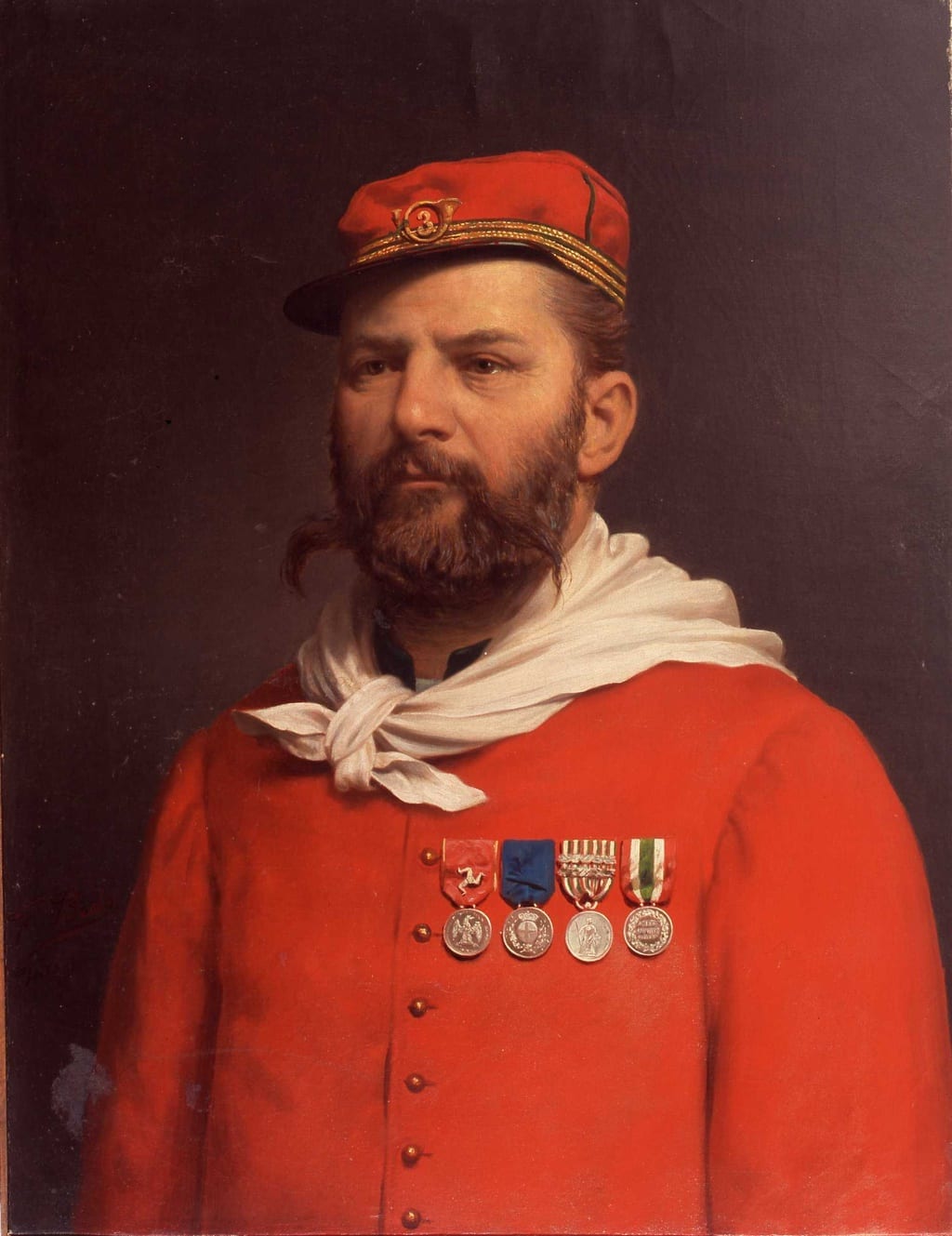Giuseppe Garibaldi will forever be remembered as the greatest hero of the Italian risorgimento and struggle for independence. Even today there is no city in Italy, large or small, that has not raised a statue in his honor. He had been popular even before Italian unification, throughout Europe and especially in England. Had he not marched on Rome in 1849 to free it from the rule of the papacy? But in 1862, when unification was almost complete but Rome and southern Italy remained outside the new kingdom, an impatient Garibaldi at the head of three thousand volunteers occupied Sicily and marched on Rome. His Redshirts were met by the army of the new Italian government, anxious not to make an enemy of the Vatican. On the mountain of Aspromonte in Calabria a brief skirmish ensued, and the volunteers put down their arms. Garibaldi was shot three times, once in the ankle. Moved to the north of Italy, he was examined by a team of six professors and surgeons, all of the opinion that no bullet was present in the wound. This decision must be viewed in the context of the extraordinary popularity of Garibaldi at the time, as emphasized by Dr. Moscucci in his comprehensive article:
Streets and squares, blouses and biscuits were named after him: ladies of fashion begged for his autograph or lock of his hair; adoring fellow Italians dubbed him “our second Jesus Christ.” Even Queen Victoria could not help remarking that Garibaldi was “honest, disinterested and brave.”
An international controversy soon ensued. An Austrian surgeon pronounced the case very serious and said that amputation would become necessary. Public appeals for money were made in Italy and also in England, where support for Garibaldi was intense and the popular press advocated his cause. Money was raised and a British surgeon, Richard Partridge, was selected to give a second opinion. This caused great consternation amongst the British medical establishment, being viewed as a breach of medical consultation ethics and amounting to patient stealing because Partridge had not been formally invited by the patient’s own doctors. Nevertheless, Partridge went to Italy, was courteously received, declared there was no bullet in the wound, and said the patient would recover with rest and good nursing care.
But Garibaldi did not improve. Swelling and pain continued, sepsis set in, and amputation became ever more likely. At the suggestion of a Hungarian physician, another opinion was sought from his former teacher, Professor August Nélaton of Paris. He came, probed the wound, and found that his probe was arrested by a hard substance, bone or metal. He recommended surgery, but the Italian surgeons hesitated. Partridge returned, accompanied by the famous Russian surgeon Nikolai Pirogov. Nélaton remained in Paris. But in order to convince the Italian surgeons that the bullet was still lodged in the wound, he had Parisian instrument makers devise a special probe with an absorbent unglazed porcelain tip that would absorb and be stained by lead present in the wound. By sending this probe to the Italian surgeons, he convinced them to operate, and the bullet was successfully removed.
The incident caused a storm in England about medical consultation ethics. There were also international implications and bad feelings between English and French surgeons. Professor Nélaton received many honors, including the Legion d’Honneur, and became very rich, accumulating a fortune of twelve million gold francs. Porcelain probes were manufactured in large numbers and used widely by military and naval surgeons. Dr. Partridge’s reputation plummeted, his practice withered away, and he died in poverty in 1873. Garibaldi slowly recovered, but his ankle would still trouble him from time to time. His case also shows how difficult it was for doctors to evaluate many surgical and medical problems before the discovery of x-rays. But in Italy in 1862 the name of two heroes, one military, the other medical, became linked for posterity forever.

Further reading:
- Moscucci A. Garibaldi and the surgeons. JR Soc Med 2001; 94:248.
- Dobson J. A surgical problem of the last century. Garibaldi’s bullet and Nelaton’ probe. Ann R Coll Surg Engl. 1953; 13:266 [Google scholar]
- Buzzi AE, Locating projectiles before and after the discovey of X-rays: the case of Giuseppe Garibaldi. Revista Argentina de radiologia 2015;79 (Jan-March):50. (in Spanish)
